Power Shift - Generating Community Solar Power
Air Date: Week of November 8, 2013

Some roofs are oriented the wrong way or shaded by trees, making it impossible to install solar panels. But as Living on Earth’s Bobby Bascomb reports, some residents in rural Massachusetts have worked out a novel way to install their solar panels some distance away from their homes.
Transcript
CURWOOD: And now, another in our series Power Shift, about the transition to low carbon energy in the Bay State.
[POWER SHIFT THEME]
CURWOOD: Massachusetts is one of many states that tries to encourage renewable energy generation with grants and price breaks for residential solar arrays. But not every residential roof top is appropriate for solar power. Maybe it’s oriented the wrong way or another building casts a shadow. Rather than give up on their sunny dream, some homeowners in suburban Massachusetts have come up with a novel solution. Living on Earth’s Bobby Bascomb has the story.
BASCOMB: The leafy rural town of Harvard, Massachusetts was settled back in 1658. Two centuries later Louisa May Alcott lived here. Harvard was the backdrop for her book Little Women. It’s quintessential New England - apple orchards surround the town, red and gold autumn leaves flank the town common. At one end of the green is a church with its tall white steeple reaching toward heaven at the other end - the 1896 Harvard General Store.
[DING OF DOOR BELL, SOUNDS OF WALKING ON CREAKY FLOOR AND STAIRS]
BASCOMB: Through the old wooden building, across creaky floors, up 3 flights of stairs, and there’s one Harvard’s leading citizens, the co-publisher of the town paper, the Harvard Press.
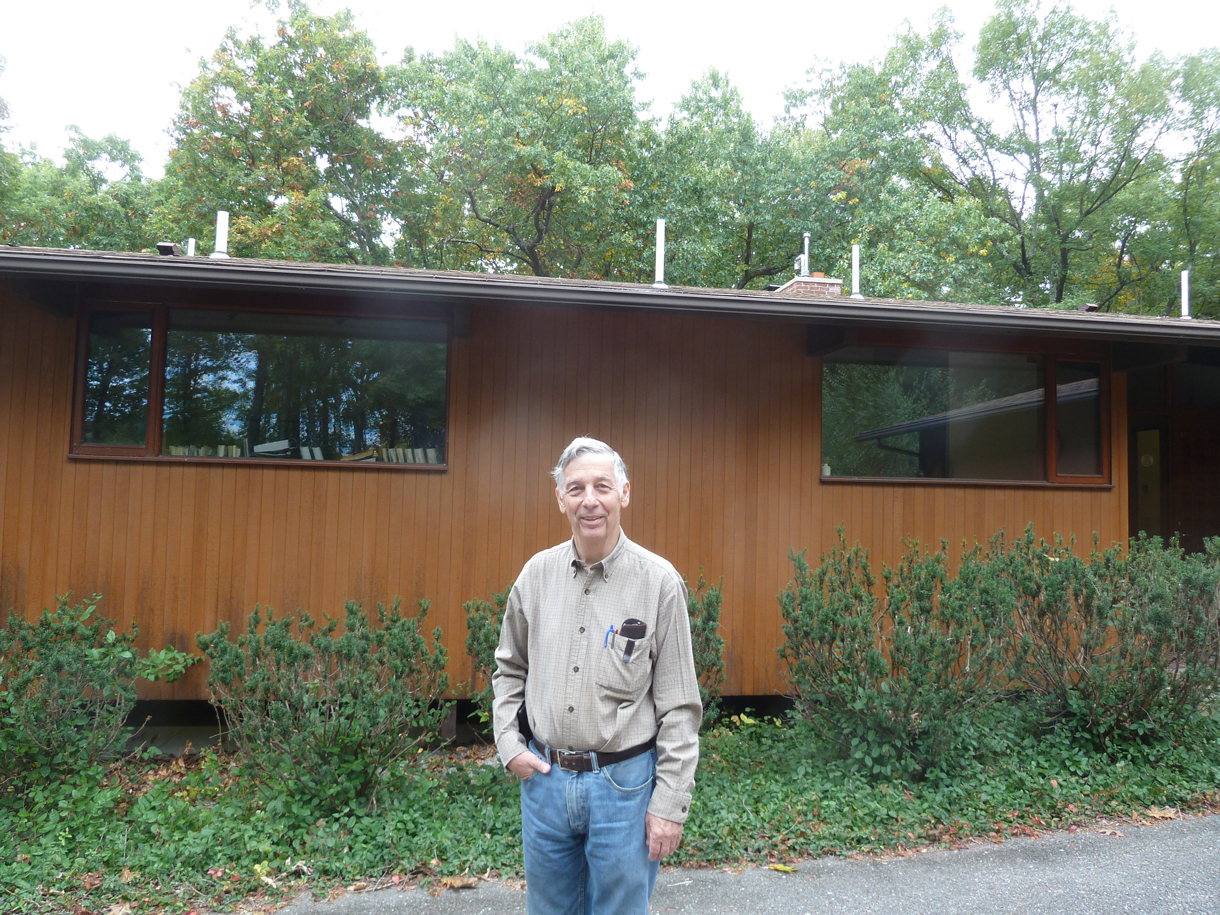
Worth Robbins stands outside his home. (Bobby Bascomb)
ROBBINS: My name is Worth Robbins and I was involved when Harvard went through the solarize process in 2011.
BASCOMB: Solarize Massachusetts is a state initiative to encourage homes and businesses across the commonwealth to add small solar arrays to their rooftops. There’s a special incentive - the more people that sign up in a community the less each individual has to pay per kilowatt of energy.
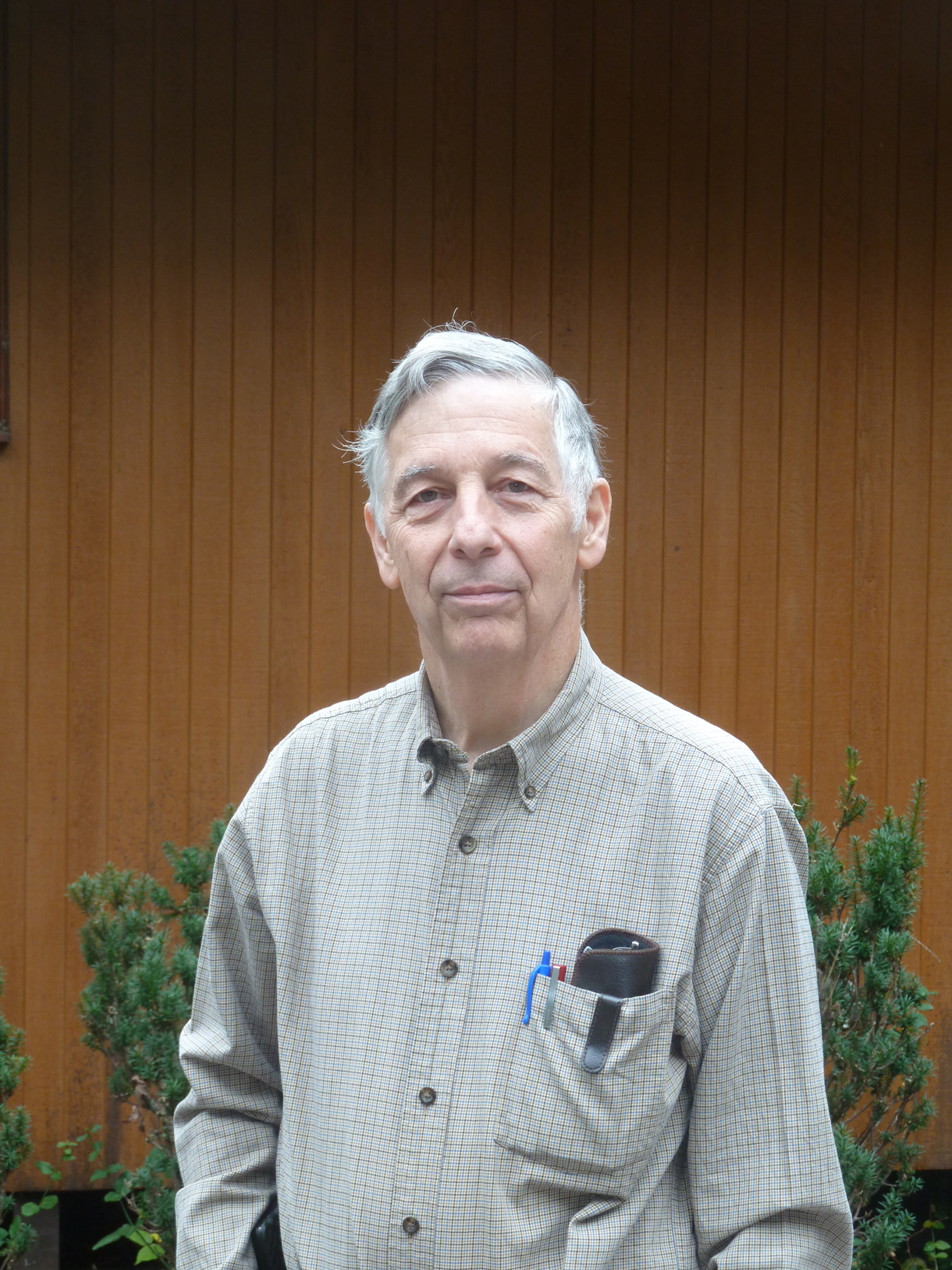
Worth Robbins is one of the principle organizers of the Harvard solar garden
ROBBINS: Harvard had a wonderful result from Solarize, we were one of four towns in the first pilot and we got over 400 kilowatts in 75 homes and that was out of a total statewide of just over 800 so we got half of the total.
BASCOMB: Worth was excited to participate in the Solarize Massachusetts project but quickly discovered that he couldn’t. To demonstrate why we pile into his Prius and head out to his home.
[CAR DOOR OPENS, TRAFFIC SOUNDS]
ROBBINS: We built our house in 1988. In fact I came out and spent many hours, many days and came out to make sure it was perfectly sited on a east-west access so it would be suitable for solar when the time came. What I didn’t take into account was that trees grow. Our house is right up that hill.
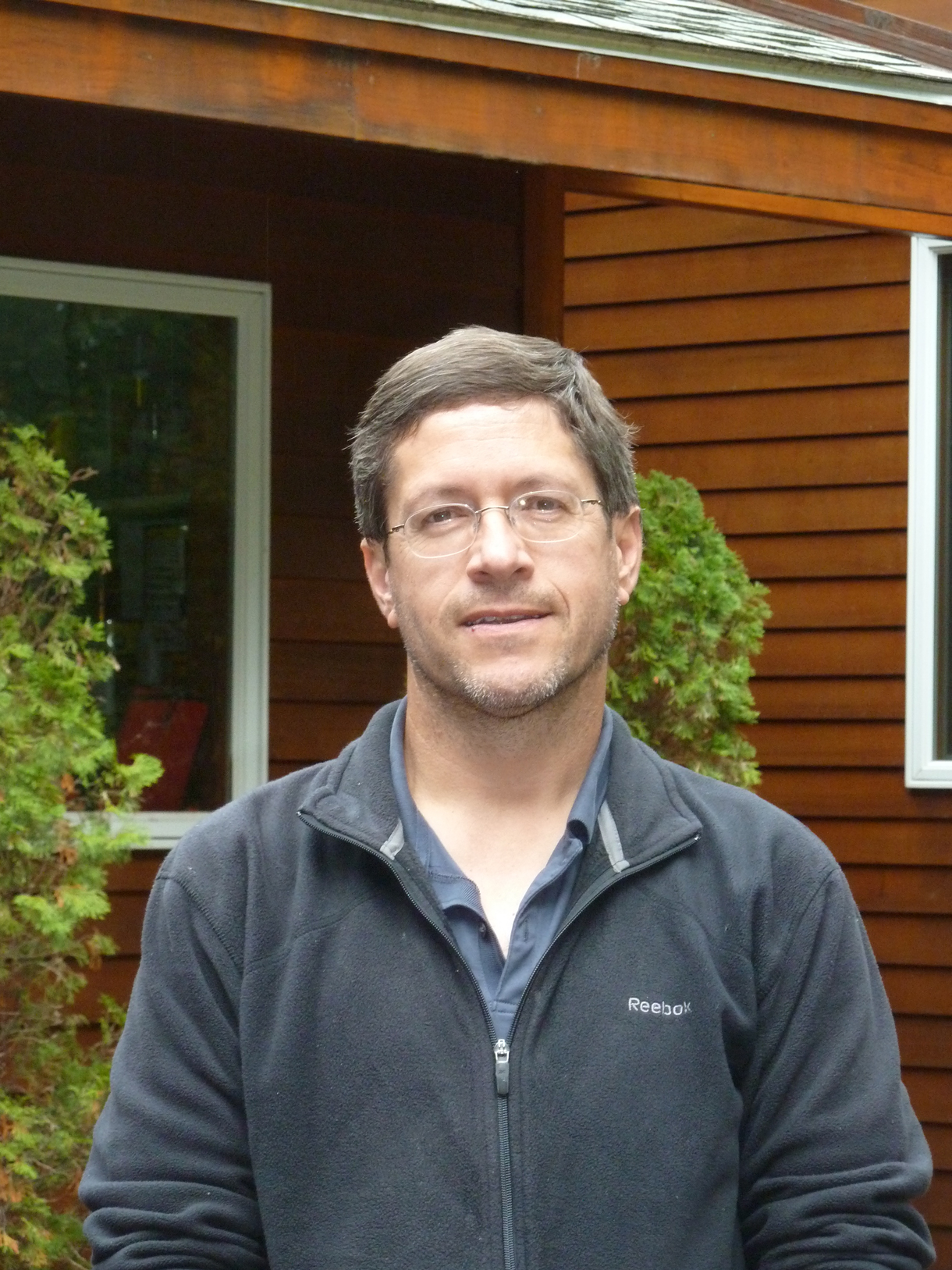
Karl Schwiegershausen is a volunteer with Harvard’s community solar project. (Bobby Bascomb)
BASCOMB: It’s a single story brown ranch house surrounded by woods. With trees full of autumn leaves we can’t see any neighbors. A couple of years ago solar assessors came to his home to make recommendations.
ROBBINS: The person who was doing the review started pointing out - that tree will have to go; that one, that one. So, we quickly got into the issue, not only would we have to cut trees on our property but on our neighbor’s property in order to open it up enough to be able to put it on the roof. Oh, and by the way we need 10 kilowatts to offset our usage and we could only get about 6 kilowatts on the roof, if and only if, we cut all the trees that are essentially the first rank away from the house.
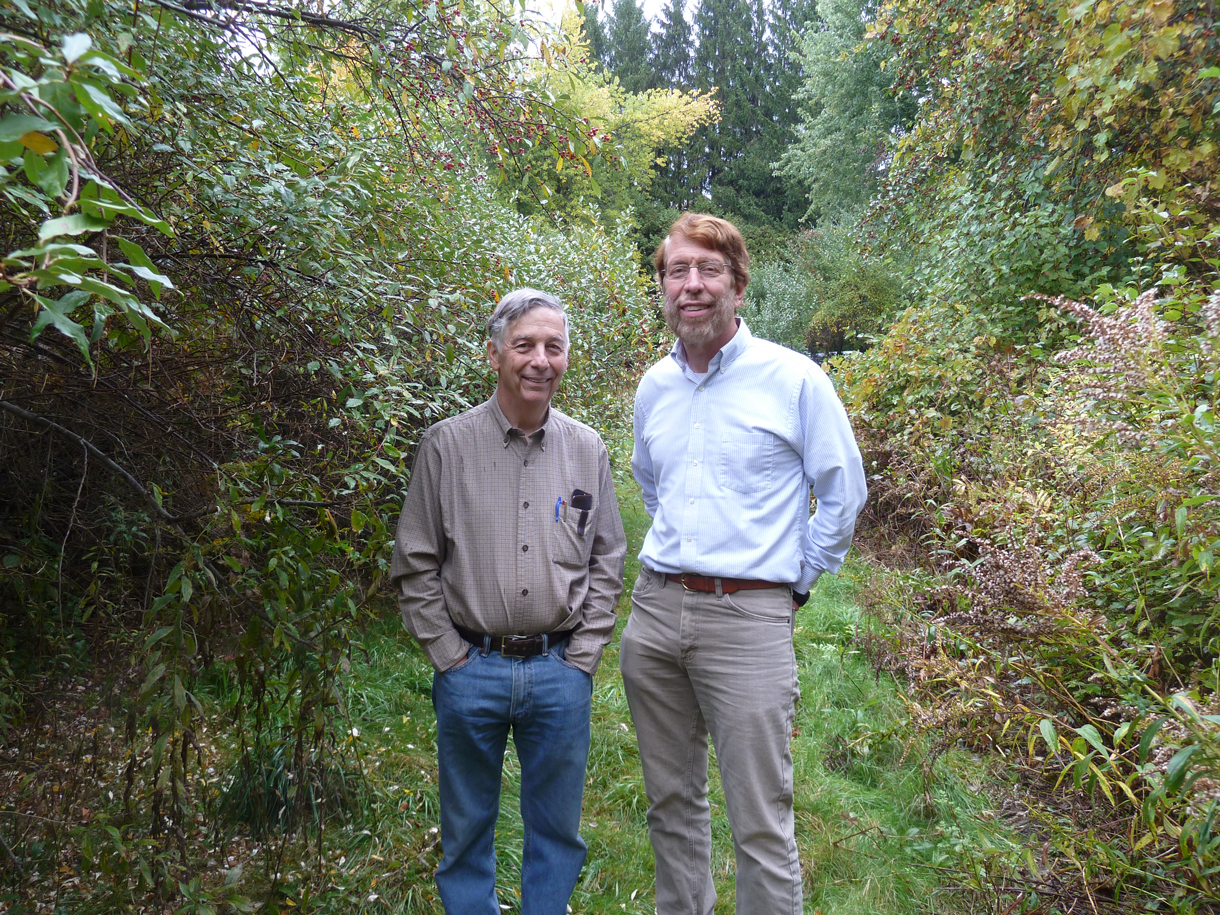
Worth Robbins (left) and Stephen Strong (right) standing in the scrub brush that will be the eventual site of the Harvard community solar array. (Bobby Bascomb)
BASCOMB (on tape): So, it’s not worth it.
ROBBINS: We didn’t want to do that. We like our wooded setting.
BASCOMB: Worth isn’t alone in his desire for solar panels on an unsuitable roof. Many of the houses here in Harvard are surrounded by leafy trees. Some homes date back to the 1700s and aren’t strong enough to support a solar array. Others have chimneys or dormers that cast shadows across the roof.
ROBBINS: So I began cultivating the idea of a community solar project.
BASCOMB: The idea is simple. If homeowners can’t have solar panels on their own property, just put them somewhere else. Karl Schwiegershausen is a volunteer with Harvard’s community solar project.
SCHWIEGERSHAUSEN: We’re trying to take the panels that we would ordinarily put on our residence and put them together somewhere in a location and use the magic of net metering to put the electrons into the grid at that location and then take them essentially back out at our residence.
BASCOMB: The technology exists to credit utility customers for energy generated remotely and some 35 households signed up. But then the red tape started. The first setback came from the state, which denied the credits and grants needed because there’s no classification for a community solar project like this. The state didn’t know if it should be regulated as a commercial or residential set- up. Again, Karl Schwiegershausen.
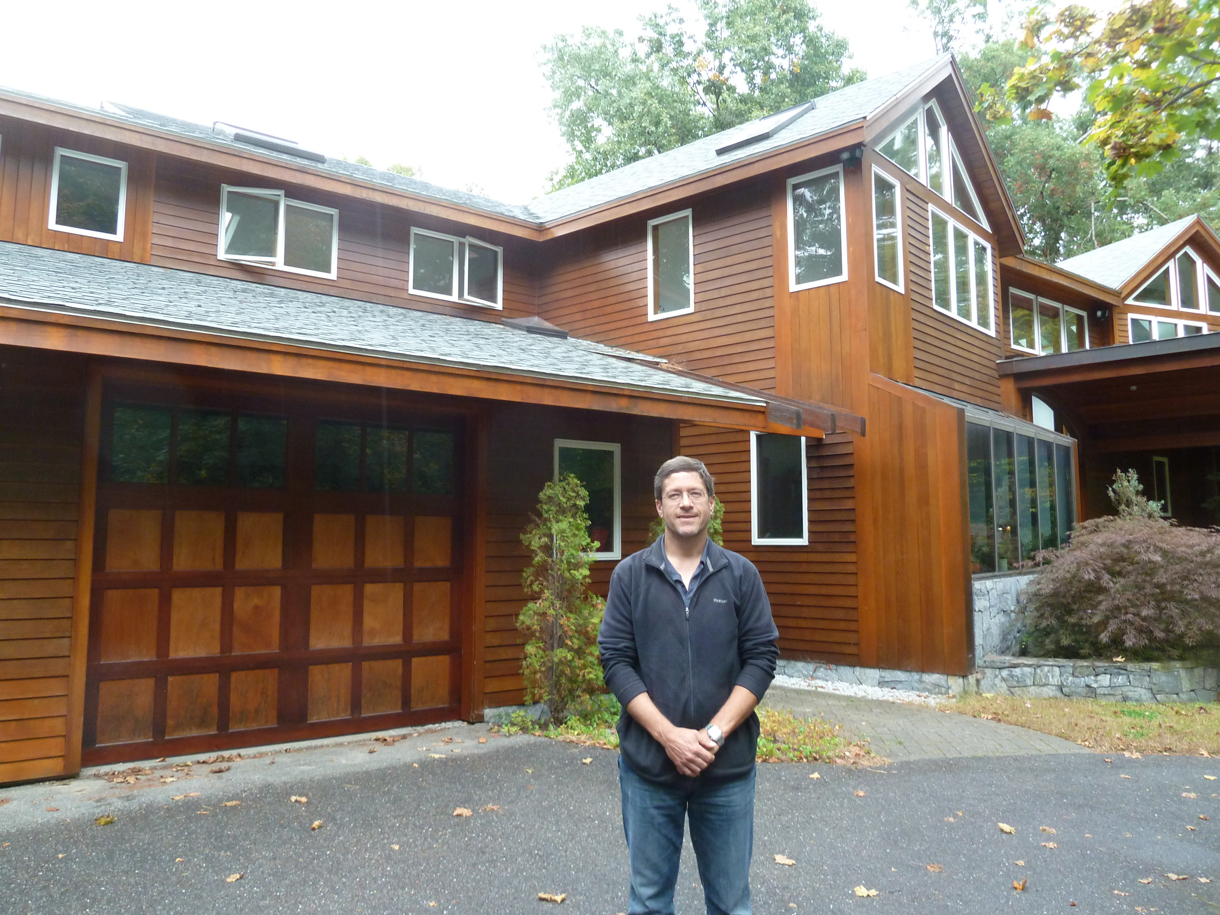
Karl Schwiegershausen’s home is also unsuitable for solar panels. (Bobby Bascomb)
SCHWIEGERSHAUSEN: If you put it on your roof and use the electrons right where you generate them no one really argues that that’s a residential application. But somehow, due to the fact that there’s now a larger group of those panels that are all individually residential applications, a lot of people now seem to think that’s a commercial application, simply because there’s an aggregation of panels that looks like a commercial array.
BASCOMB: The Harvard solar project is the first of its kind in Massachusetts and it’s always hard to be the first one to try something new. But projects like this are common in other parts of the country. That’s according to Jason Coughlin, a solar finance analyst with the National Renewable Energy Lab in Colorado.
COUGHLIN: Community solar is actually taking off across the nation, primarily in a handful of states such as Colorado, California, Arizona. Some recent legislation in Minnesota looks to open that market as well. It’s a couple of states that have been on the forefront of solar in general so it makes sense that they’re leading the charge as it relates to community solar.
BASCOMB: Solar power in general is growing very quickly but community solar projects like this are a small part of that growth. Coughlin estimates that in the second quarter of this year roughly 800 megawatts of solar capacity was added to the grid in the US and roughly 25 megawatts of that energy comes from community projects.
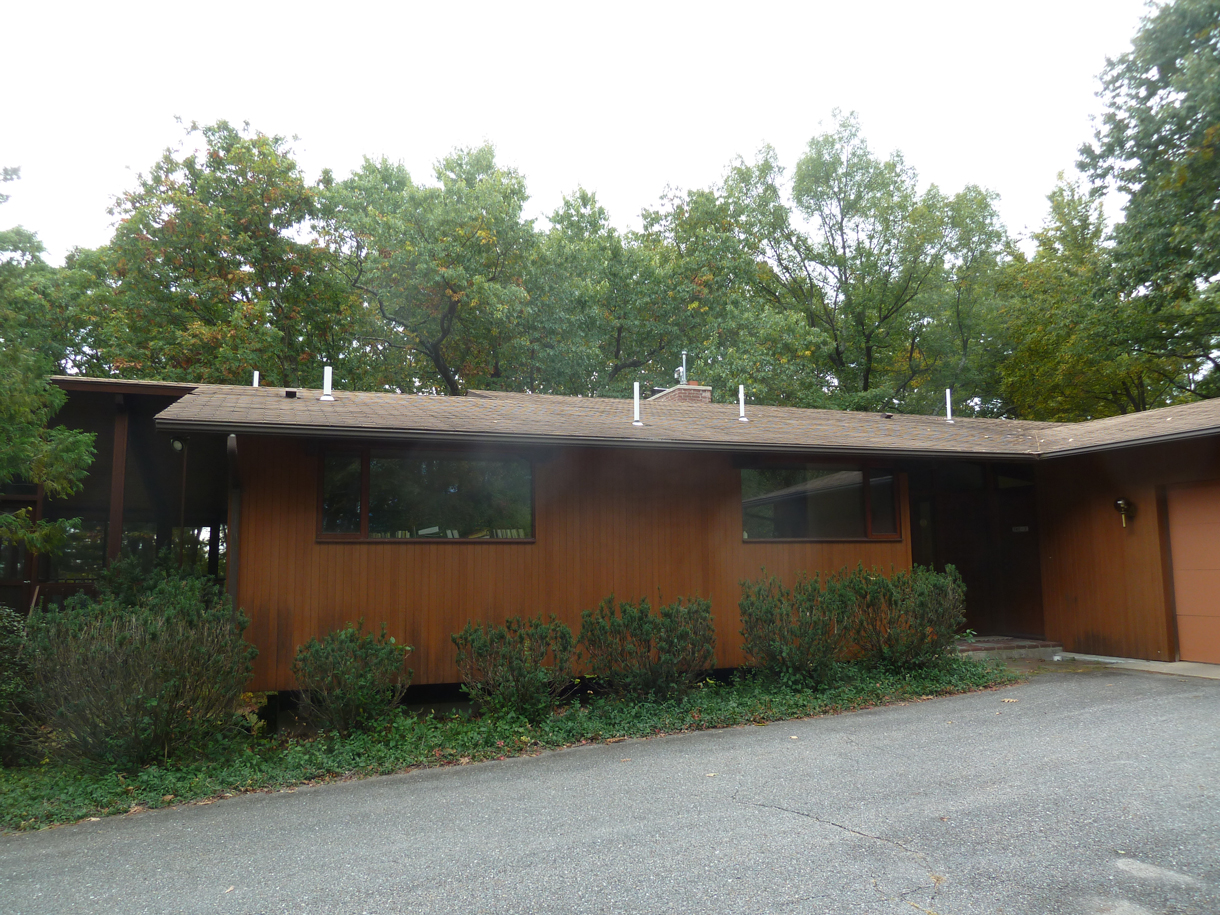
Worth Robbin’s home is surrounded by trees and not suitable for a solar array. (Bobby Bascomb)
Back in Massachusetts, state authorities eventually relented and incorporated new wording in the regulations to include a community solar array like the Harvard project. But then there were problems with the town. Again, Karl Schwiegershausen.
SCHWIEGERSHAUSEN: In the town, I think there was more concern that if they were to give us a certain arrangement, that there might be an opening or a precedent set for larger commercial ventures to come in in a way that the town might not be comfortable with.
BASCOMB: Marie Sobalvarro is chair of the Harvard Board of Selectmen. She says most new commercial projects are welcome in the town.
SOBALVARRO: Harvard basically derives about 94% of its tax revenue from residential, which is an unduly high percentage, and there’s been ongoing interest in increasing the commercial tax revenue base to take some of the load off the residences.
BASCOMB: Initially the town wanted to tax the project at a commercial rate. Solar advocates and selectmen are still negotiating how much the array will pay in fees and taxes, but basically the town now supports the initiative. However, then came the problem of where to put the solar panels.
[CAR DRIVING SOUNDS]
BASCOMB: We climb back in the car and Worth Robbins heads down a bumpy dirt road to an abandoned apple orchard, the original place selected for the solar project. That site met with fierce opposition.
ROBBINS: That first apple tree that I’m pointing at now is the beginning of the orchard. The first 3 rows were not going to be taken, so there’s no way that anyone would be able to see the panels other than if they walked back in here to look.
BASCOMB (on tape): So, what was the objection?
ROBBINS: Well, the objection was that they were a big commercial system in a residential neighborhood. It was more emotional than rational in my judgment.
BASCOMB (on tape): That must be frustrating.
ROBBINS: It was very frustrating. We probably could have taken it to court and prevailed but we didn’t want to do that. We wanted this to be compatible with the community.
BASCOMB: In a town of 6,000 people everyone knows everybody else. They keep bumping into each other - at the general store, at church, at the dump. Worth didn’t want to make any enemies, so he started looking for a new site for the project. This time, in a commercial zone.
[CARS DRIVE BY, BIRD SONG]
BASCOMB: The new site for the solar farm is on the outskirts of town. The closest neighbors are an office building and a pizza joint. Currently it’s two and a half acres of scrub brush. Steven Strong, the president and founder of Solar Designs, met us there.
STRONG: We expect to begin construction within about a month. The first effort there will be clearing the scrub that you see and have that done before the weather turns and the frost sets in. We’ll be ready then for installation of the ground mounted solar arrays as soon as the weather breaks in the spring.
BASCOMB: To qualify for the grants that make this project possible, Worth Robbins says the solar array has to be operational by June 2014.
ROBBINS: So that’s our outside date. Operational, meaning the system is generating and the credits are flowing, so that’s the latest that it can be.
BASCOMB: So eight months from now, you have to be operational and generating electricity and right now we’re standing in a scrub.
WORTH: Right.
BASCOMB: Do you think that’s going to happen?
ROBBINS: I do. Stephen will tell you—what is it that you call me?—some kind of optimist with some a pejorative adjective.
STRONG: Worth is an optimist, an undeniably incurable optimist. That’s the only reason why the garden has gotten this far.
BASCOMB: It’s nice that you refer to it as a garden.
STRONG: Well, we’re harvesting sunlight. It’s not just producing scrub brush, it’s producing electricity, which is valuable and universally required by everybody. Solar and renewable energy is our future. The quicker we realize that, the better we’re going to be.
BASCOMB: So far six businesses and 35 households have signed up to get their power from the Harvard community solar project. When it’s complete, the solar farm will produce more than 530 kilowatts of energy, enough for another 25 households to join in. Ever the optimist, Worth Robbins says it’s just a matter of time before his neighbors see the light and sign up for the solar garden.
For Living on Earth, I’m Bobby Bascomb in Harvard, Massachusetts.
Links
Living on Earth wants to hear from you!
Living on Earth
62 Calef Highway, Suite 212
Lee, NH 03861
Telephone: 617-287-4121
E-mail: comments@loe.org
Newsletter [Click here]
Donate to Living on Earth!
Living on Earth is an independent media program and relies entirely on contributions from listeners and institutions supporting public service. Please donate now to preserve an independent environmental voice.
NewsletterLiving on Earth offers a weekly delivery of the show's rundown to your mailbox. Sign up for our newsletter today!
 Sailors For The Sea: Be the change you want to sea.
Sailors For The Sea: Be the change you want to sea.
 The Grantham Foundation for the Protection of the Environment: Committed to protecting and improving the health of the global environment.
The Grantham Foundation for the Protection of the Environment: Committed to protecting and improving the health of the global environment.
 Contribute to Living on Earth and receive, as our gift to you, an archival print of one of Mark Seth Lender's extraordinary wildlife photographs. Follow the link to see Mark's current collection of photographs.
Contribute to Living on Earth and receive, as our gift to you, an archival print of one of Mark Seth Lender's extraordinary wildlife photographs. Follow the link to see Mark's current collection of photographs.
 Buy a signed copy of Mark Seth Lender's book Smeagull the Seagull & support Living on Earth
Buy a signed copy of Mark Seth Lender's book Smeagull the Seagull & support Living on Earth

